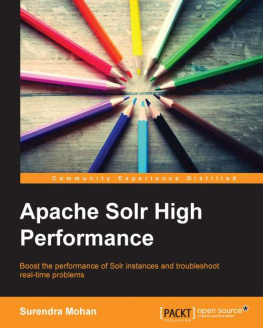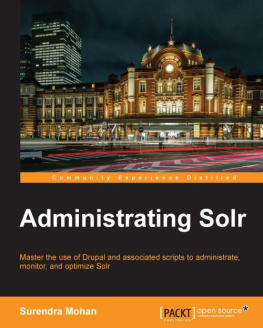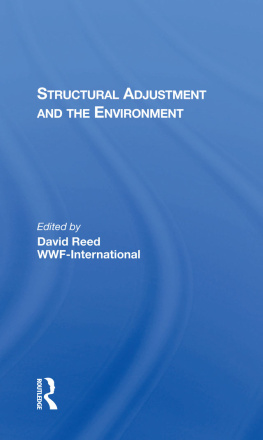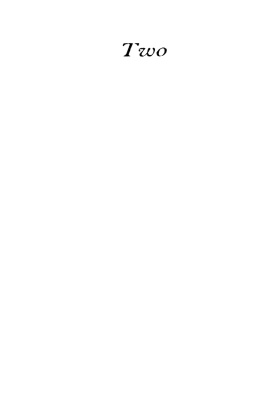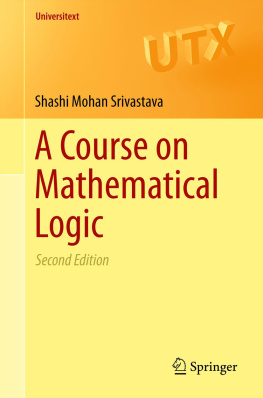Mohan - Structural adjustment: theory, practice and impacts
Here you can read online Mohan - Structural adjustment: theory, practice and impacts full text of the book (entire story) in english for free. Download pdf and epub, get meaning, cover and reviews about this ebook. City: London, New York, Developing countries, year: 2000, publisher: Taylor and Francis; Routledge, genre: Politics. Description of the work, (preface) as well as reviews are available. Best literature library LitArk.com created for fans of good reading and offers a wide selection of genres:
Romance novel
Science fiction
Adventure
Detective
Science
History
Home and family
Prose
Art
Politics
Computer
Non-fiction
Religion
Business
Children
Humor
Choose a favorite category and find really read worthwhile books. Enjoy immersion in the world of imagination, feel the emotions of the characters or learn something new for yourself, make an fascinating discovery.

- Book:Structural adjustment: theory, practice and impacts
- Author:
- Publisher:Taylor and Francis; Routledge
- Genre:
- Year:2000
- City:London, New York, Developing countries
- Rating:3 / 5
- Favourites:Add to favourites
- Your mark:
- 60
- 1
- 2
- 3
- 4
- 5
Structural adjustment: theory, practice and impacts: summary, description and annotation
We offer to read an annotation, description, summary or preface (depends on what the author of the book "Structural adjustment: theory, practice and impacts" wrote himself). If you haven't found the necessary information about the book — write in the comments, we will try to find it.
Mohan: author's other books
Who wrote Structural adjustment: theory, practice and impacts? Find out the surname, the name of the author of the book and a list of all author's works by series.
Structural adjustment: theory, practice and impacts — read online for free the complete book (whole text) full work
Below is the text of the book, divided by pages. System saving the place of the last page read, allows you to conveniently read the book "Structural adjustment: theory, practice and impacts" online for free, without having to search again every time where you left off. Put a bookmark, and you can go to the page where you finished reading at any time.
Font size:
Interval:
Bookmark:
Giles Mohan, Ed Brown,
Bob Milward and
Alfred B. Zack-Williams

First published 2000
by Routledge
2 Park Square, Milton Park, Abingdon, Oxon OX14 4RN
Simultaneously published in the USA and Canada
by Routledge
270 Madison Ave, New York NY 10016
Routledge is an imprint of the Taylor & Francis Group
Transferred to Digital Printing 2006
2000 Giles Mohan, Ed Brown, Bob Milward andAlfred B. Zack-Williams
The right of Valentina Vadi to be identified as author of this work has been asserted by her in accordance with sections 77 and 78 of the Copyright, Designs and Patents Act 1988.
Typeset in Galliard by Taylor & Francis Books Ltd
All rights reserved. No part of this book may be reprinted or reproduced or utilised in any form or by any electronic, mechanical, or other means, now known or hereafter invented, including photocopying and recording, or in any information storage or retrieval system, without permission in writing from the publishers.
British Library Cataloguing in Publication Data
A catalogue record for this book is available from the British Library
Library of Congress Cataloging in Publication Data
Structural adjustment theory, practice and impacts / Giles Mohan, [et al.]
p. cm.
Includes bibliographical references and index.
1. Structural adjustment (Economic policy)Developing. I. Mohan,
Giles, 1966
HC59.7.S87368 2000
339.5'09172'4dc21 99048397
ISBN 0415125219 (hbk)
ISBN 0415125227 (pbk)
| ALFRED B. ZACK-WILLIAMS WITH ED BROWN AND GILES MOHAN |
| BOB MILWARD |
| BOB MILWARD |
| ALFRED B. ZACK-WILLIAMS |
| GILES MOHAN |
| GILES MOHAN |
| ED BROWN |
| ED BROWN |
| ED BROWN |
The International Monetary Fund and the World Bank are key players in the global economy, but their role often goes unnoticed. The Structural Adjustment Programmes (SAPs) they introduce in the wake of financial crises aim to reform economies and ensure a flow of revenue for debt repayment. While this economic management seems sensible, it can have extremely harsh effects which can undermine development.
Structural Adjustment: Theory, Practice and Impacts examines the genesis of these problems and reveals the damaging impacts that SAPs can have. Starting with a look at how the debt crises of the 1970s forced developing countries to seek external help, the book moves on to review what constitutes a standard ad-justment programme, detailing the political, economic, social and environmental impacts of SAPs. The final section draws together theoretical critiques of adjust-ment, as well as political responses on the ground, and presents a case for alternatives to the programmes.
Focusing on Africa, Latin America and Asia, this book presents the origins, impacts and alternatives to SAPs in an accessible and systematic manner and demonstrates the complex effects of these programmes.
Giles Mohan is a Senior Research Fellow in the Department of Geography, University of Portsmouth; Ed Brown is a Lecturer in the Department of Geog-raphy, Loughborough University; Bob Milward is a Senior Lecturer in Economics at the University of Central Lancashire; and Alfred B. Zack-Williams is a Reader in Sociology at the University of Central Lancashire.
Figures
| 2.1 |
| 2.2 |
| 2.3 |
| 2.4 |
Tables
| 1.1 |
| 3.1 |
| 3.2 |
| 3.3 |
One might think, among other things, that in a period of capitalist triumphalism there is more scope than ever for the pursuit of Marxisms principal project, the critique of capitalism. Yet the critique of capitalism is out of fashion. There can never have been a time since Marxs day when such a task needed doing more urgently, as more and more branches of knowledge, both in cultural studies and in the social sciences, are absorbed into the self-validating assumptions of capitalism or at least into a defeatist conviction that nothing else is possible.
(Meiksins Wood 1995: 1 and 4)
While teaching Development Studies in Preston a student came to me after a lecture and asked what single text I could recommend that covered the theories underlying Structural Adjustment Programmes (SAPs) as well as their various impacts. I thought for a while and mentioned a couple of chapters and a pamphlet. As soon as she had left I locked my office and hurtled around to Alfred B. Zack-Williams room in the adjacent building. On asking him the same question that the student had asked me he was equally stumped. It was from there that this book emerged. After too many years of writing I am pleased that there is still nothing on the market which covers this range of material.
But beyond pedagogical and marketing reasons we feel that this book is important for wider political motivations. As the quote above suggests, the need to analyse and criticise global capitalism is now more pressing than ever. It is ironic, but perhaps not coincidental, that at the very time that such a critique was needed, the one body of theory and praxis which has consistently exposed the contradictions of capitalism was seen to be in an impasse (Rapley 1994; Schuurman 1993). This body of theory is, of course, Marxism, which from the mid-1980s (Booth 1985) onwards began to be discredited within Development Studies in particular and social theory more generally. The ending of the Cold War in the late 1980s signalled the practical limitations of actually-existing socialism and with it the Marxist project.
The triumphalism that greeted the ending of the Marxist alternative and the hegemony of a globalising capitalism was summed up in Francis Fukuyamas (1992) End of History thesis. He famously argued that liberal democracy allied to market capitalism was the pinnacle of human achievement (despite being rather dull) and that all contending ideologies were invalid. Subsequent conflicts and crises have attempted to reconcile this assertion by reducing these problems to examples of irrationality, in much the same way as modernisation theorists had done in the early days of the Cold War. For example, Sierra Leone was, according to Kaplan (1994), seen to epitomise the anarchic outpourings of uncivilised people. Likewise the currency speculations of Nick Leeson were seen to be the machinations of a single rogue trader who flouted the rules. The overall picture was one of a normal and inevitable logic which dissenting governments ignored at their peril (Agnew and Corbridge 1995).
Underlying this discourse about the natural order of globalisation and free-marketeering was a set of political and economic processes which went largely unseen by the majority of the developed world, but could hardly be ignored by those people living in the Third World. Contrary to Fukuyama and others (for example, Ohmae 1990; Friedman and Friedman 1980), the globalisation of free markets and neo-classical order was anything but natural and inevitable. Huge political and economic resources, known as structural adjustment programmes, were mobilised to ensure that these dissident countries danced to the same tune. It is often overlooked that in the heartlands of neo-liberalism equally heavy-handed and repressive political power was used to weaken the power of labour and remove the state from large sectors of economic and social life. Either way, the neo-liberal world order has been, and is being, created through the intervention of key institutions such as the World Bank and International Monetary Fund. It is ironic that a theory that posits the freedom of markets and the limited use of state power requires massive amounts of political interfer-ence to do so (Polanyi 1960).
Font size:
Interval:
Bookmark:
Similar books «Structural adjustment: theory, practice and impacts»
Look at similar books to Structural adjustment: theory, practice and impacts. We have selected literature similar in name and meaning in the hope of providing readers with more options to find new, interesting, not yet read works.
Discussion, reviews of the book Structural adjustment: theory, practice and impacts and just readers' own opinions. Leave your comments, write what you think about the work, its meaning or the main characters. Specify what exactly you liked and what you didn't like, and why you think so.

